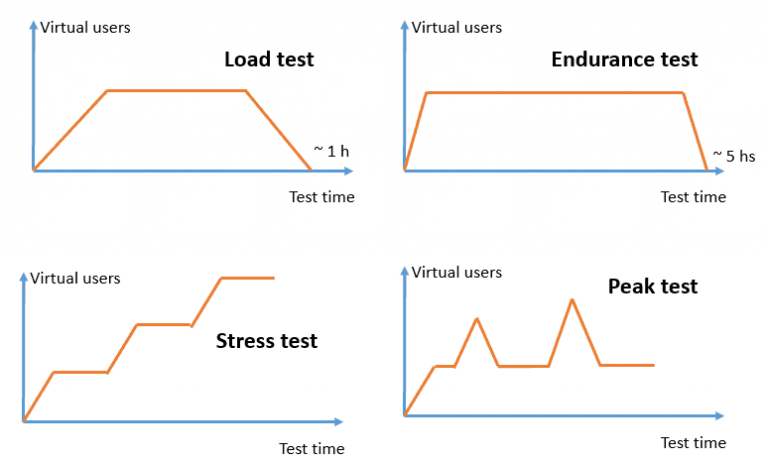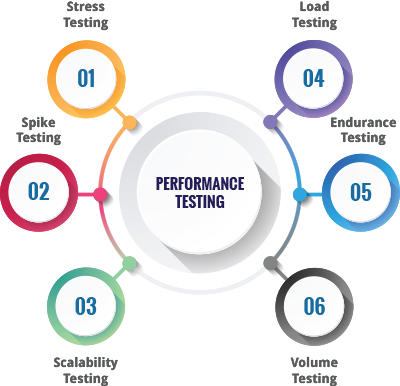Once the mammoth task of app creation is successfully accomplished, next comes another critical task that ensures the ultimate success of a mobile app, server, or a service. Load and performance testing is the need-of-an-hour to ensure the success of any application like it is vital to check whether your app, server or service is delivering the appropriate speed. It is crucial to check whether the latest feature integrated into the app is performing smoothly or trigger any kind of performance degradation or memory leak. And that is done only by checking the app’s performance.
Understanding Load Testing/Performance Testing
Well, load testing is a form of “performance testing”, which is executed to determine the performance of a system or an app under the real-life load conditions. This kind of testing is useful in determining how the app behaves when it is being accessed simultaneously by multiple users.
Load testing is beneficial to:
- Identifying the maximum operating capacity of an app.
- It helps in determining whether the current infrastructure is sufficient enough for running the app.
- Helps in ensuring the app’s sustainability in regard to peak user load.
- It helps in recognizing the number of concurrent users an app can support, and scalability for allowing more users to access it.
- Ultimately, load testing is a kind of non-functional testing and it is usually used for client/server, web-based apps – both Internet & Intranet.
Why do You Need Load Testing?
Load Testing is helpful in understanding the potential capacity limits of websites & applications. Hence, if you want to be totally ensured that your app is able to take the pressure and perform well under strain, then Load Testing is the answer. In the past, there have been several prominent websites that went through serious meltdowns when they received massive traffic volumes. After all, it is quite common for the e-commerce website to make heavy investments in the advertising campaigns, but they usually restrain from investing in Load Testing, which would ensure the optimal system performance when all of that marketing brings the traffic.
For instance, we have a popular toy-store website, Toysrus, which failed to handle increased traffic their advertising & marketing campaign generated and this resulted in the loss of both the marketing dollars, as well as potential toy sales. Another example is of an airline website that failed to handle the 10000+ users it received during a festive offer. Even, Encyclopaedia Britannica declared free access to the users to their online database as a part of a promotional offer.
However, later on, they failed to keep up with the onslaught of traffic for weeks. There are several examples of websites that suffer delayed load times upon encountering heavy traffic, which does no good for their business. The matter-of-fact is that most of the users click away from a website or an app after eight seconds delay in loading. In fact, the business loses out on $4.4 Billion annually owing to the poor performance.
How Load Testing/Performance Testing Can be a Game-Changer?
What Load Testing ultimately stands for is that we put the demands on a software system or a computing device by simulating the heavy levels of traffic, so as to measure the response times. What how does it happen? Let’s explore it here:
- Page Load Times: Load Testing allows us to fetch information on which pages are taking longer than the rest to load when the website or app traffic increases. This way it gets easier to prioritize and problems and resolve them quickly.
- Global Positioning: With sites or apps having servers positioned around the world, it is possible to recreate these conditions and ensure that the apps/sites still hold up irrespective of increased traffic, recognizing where the required changes have to be made.
- Network Conditions: It is possible to simulate various mobile network conditions and test capabilities of an app or a site when accessed from less than ideal network coverage areas.
- API & Server responses: What Load Testing does is that it uncovers trends between the request & response times during the times of massive traffic, and it shows whether your system can withstand this pressure or not. It highlights the concerning areas that can be then fixed so the users don’t come across any nesting page errors.
What a Great Load Test is all about?
To ensure the success of a Load Test, it is vital for it to be well-planned with clear-cut goals. It can be helpful to write user journeys that accurately recreate the expected user behaviors. Then, these scenarios can be run on the website/app with varying numbers of concurrent virtual users. Work to create a situation that is relevant to the typical site conditions – this way in case your website/app gets thousands of visits at the peak times, then there will be no requirement to test it with million virtual users. For instance, site performance can be compared when there are 200 users in 10 minutes against the 200 users in 30 minutes. Once it is ensured that user journeys are accurate & realistic, and the scenarios are pre-planned against which the test needs to be done, it gets easier to ensure that the gathered data will provide the valuable answers to the questions, instead of the futile information.
After the load testing is done successfully, it is time to analyze the gathered data and create a report that clearly shows the performance capabilities of a website or an app, from which the improvements can be made as necessary. Then the same load test is run once again, after applying the improvements, to find out and confirm if there has been any positive impact, i.e. improvement in the site’s performance. Testing needs to be kept lean & interactive in order to able to answer & solve the most crucial question. Thus, only those tests are conducted that add value and ensure that the required data is gathered back.
All through the procedure, it is vital to keep the communication going between the project team & client – in order to ensure that the site testing is done at a most convenient time, which is usually at the time when it receives the lowest recorded site traffic. However, ideally, the load tests are accomplished on an isolated app/website not having other users, so to successfully control the received data and the environment.
It is crucial to organize regular quality checks, as starting a test that has errors not just wastes your time but even money. A ‘Load Test’ is more than likely to fail if it lacks a well-planned setup, schedule & documentation procedure, and doesn’t provide the information required to measure the performance of the software.




















